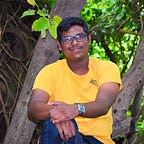Last week, here at the University of Tartu, I conducted a session on a photonics workshop about classical optical interferometry techniques. Even though I didn’t choose the experiments for the workshop, surprisingly, they are related to one of my favorite subjects, relativity. The experiments are the Fizeau interferometer, Michelson interferometer, and Sagnac interferometer. These experiments played a crucial role in developing 19th and 20th-century physics and led to the birth of ‘Modern Physics’.
In the late 1800s, physicists believed that all the physical fields (like electric, magnetic, sound, and light) could be expressed as waves. The belief was mainly due to the success of Maxwell’s work on electromagnetic theory. It applied to many existing systems and led to the development of theories such as Kirchoff’s laws, Snell’s law of reflection, etc. So, it is no wonder that scientists believed light could also be a wave. In fact, Young’s double-slit experiment provided a solid platform for that belief — yet with some questions.
The primary question is, if the light is a wave, like the sound, it would require a medium to travel. But then, it was well established that light could travel even in a vacuum. So, physicists like Fresnel proposed an imaginary medium called ‘luminiferous ether,’ an invisible, infinite medium without interaction with any physical systems. This proposal inspired a lot of research for the next 70 years! Many physicists attempted theoretical and experimental studies to prove or disprove the existence of the ether.
Of these studies, interferometry played a dominant role because they expected to detect an ether drag. This expectation arose due to Fizeau’s experiment, which inspired both Michelson-Morley and Einstein to devise their analysis. In 1851, Fizeau developed an interferometer with a flowing water tube for his experiment. He measured the velocity of the light w.r.t the flow direction and noticed a reduction in the speed of light as it traversed through the medium against the flow of light. He extended this idea to the ether. That is, if the light moves against the observer’s direction, there could be a drag due to ether, which in turn would affect (reduce) the speed of the light. But his experiments have certain limitations too. The observed values do not match with the theoretically predicted values. Also, when he repeated the experiment with flowing air instead of water, he did not observe any variations. So, he proposed an even more complicated assumption called partial ether theory.
Then, in the 1870s, two American physicists Michelson and Morely, designed one of the most famous interferometric experiments in history. Known as the Michelson interferometer, their instrument consists of two arms perpendicular to each other. They adopted this design with an expectation that if one arm is parallel to the direction of movement of the earth, then the other one would experience an ether drag as is normal to the first one. This experiment was carried out in multiple places and under various conditions. Surprisingly they failed to observe any ether drag. The experiment’s failure created many questions about the theory of ether and subsequently led to the development of Einstein’s theory of special relativity in 1905.
But few have still been in an affair with the ether theory. One of them is Sagnac, and in 1913 he designed an angular interferometer to detect ether with common-path geometry. He did observe a variation in the speed of the light w.r.t angular momentum, which might have caused due to ether drag. But the last nail in the coffin of ether theory was already hammered by Laue even before two years of Sagnac’s experiment. In his theoretical work in 1911, Laue showed it is possible to observe variation in the velocity of the light depending upon the observer’s frame of reference. Such a case was deliberate in special theory as the angular momentum favors one path of light in the common field interferometers. So, essentially Sagnac experiment confirmed the unnecessity of a medium for the propagation of light. In the following years, when the quantum theory was proposed, Physicists were ready to embrace the duality of light — as a particle and a wave.
Even though these three experiments were designed to investigate the ether medium, today, they find a lot of practical applications. A modified version of the Michelson interferometer is used in the LIGO experiment to detect gravitational waves. Fizeau and Sagnac experiments are widely used for optical quality testing and to correct the satellite positions. In the past, and as a novice, I wondered why it is necessary to study the old theories and concepts as we have the newer and more polished ones. But then only I understand the meaning of Newton’s phrase ‘standing on the shoulders of giants’. I hope the attendees of the workshop may also get the feel!
